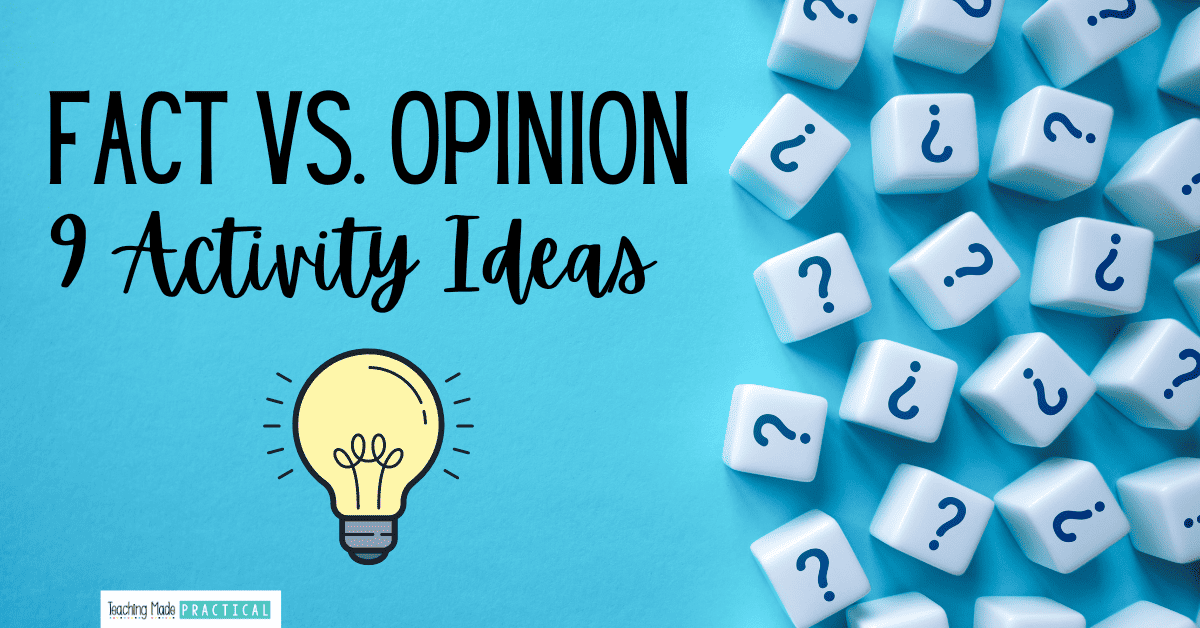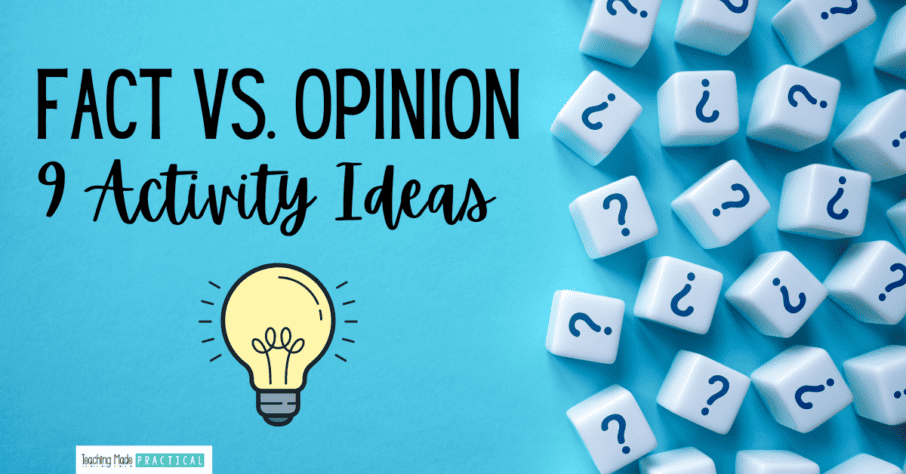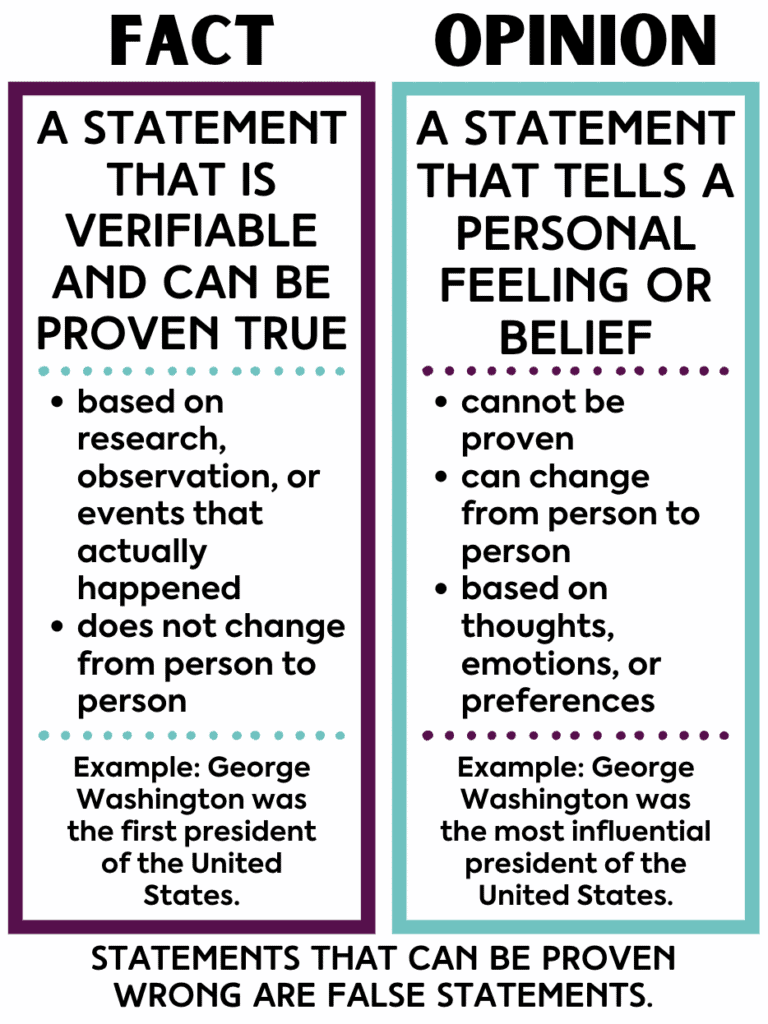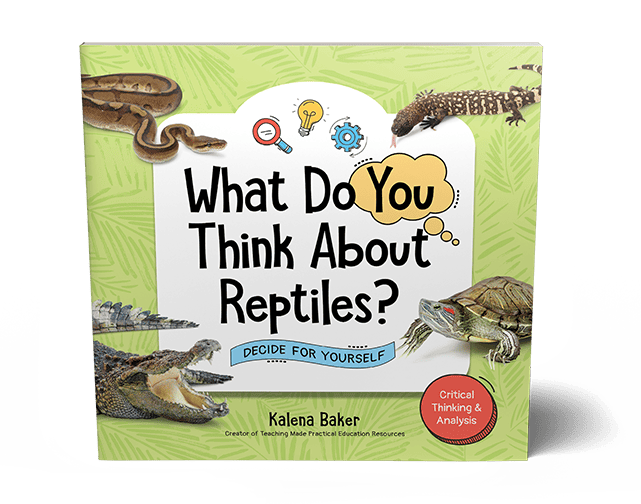
Fact Vs. Opinion Lessons & Activity Ideas
1. Create a Fact and Opinion Anchor Chart
Students usually have a vague understanding of the differences between fact and opinion, but clarifying these differences in writing can be extremely helpful. Use the anchor chart pictured below (which is part of this no prep fact and opinion resource) as inspiration.
To make this more interactive, give each student a post-it note, have them write a fact or opinion on it, and add it to your anchor chart!
2. Fact and Opinion Practice Through Sorts
Sorts are a fun and interactive way for students to practice distinguishing between fact and opinion. Write facts and opinions on index cards, and have students sort between the two.
A fun alternative to the sort is a maze! In this fact and opinion resource, students complete mazes by shading in either the facts or the opinions. Mazes are always a favorite with students - and it's even better when mazes review ELA skills!
You could also have a fact and opinion snowball fight! Check out these ideas for using snowball fights in the classroom to practice all sorts of skills.
3. Write Your Own Facts and Opinions
Writing your own facts and opinions about a certain topic is a great way to help students understand the difference between the two. Model this to your 3rd, 4th, and 5th grade students using these fact and opinion examples, and then have them write their own facts and opinions about a certain topic! Check out the examples below for ideas.
GEORGE WASHINGTON
FACT: George Washington was the first president of the United States
OPINION: George Washington was the most influential president of the United States.
BROCCOLI
FACT: Broccoli is a green vegetable that contains Vitamins A and C.
OPINION: Kids should eat broccoli every day.
You could have students write a fact and opinion about:
- flowers
- volcanoes
- landforms
- butterflies
- fingernails
- cafeteria food
- reptiles
- ...etc.
4. Read Nonfiction Books With Clear Facts and Opinions
There are a LOT of amazing nonfiction children's books - but not all of these books are ideal for teaching fact and opinion. Check out this list of books that you can use to model fact and opinion with your upper elementary students.
And if you need a book that demonstrates how authors use facts to support their own claims, then check out the children's book I wrote! It's hard to find nonfiction books that can be used for teaching skills like fact and opinion, author bias, and point of view - which is exactly why I wrote this book.
5. Go on a Fact and Opinion Scavenger Hunt
Have students go on a scavenger hunt for facts and opinions! Have them look through books and texts in your classroom and make a list of different facts and opinions they found.
If students enjoy this activity, they will like this word study scavenger hunt idea.
6. Compare and Contrast Facts and Opinions in Writing
Combine your fact and opinion lessons with a writing lesson on comparing and contrasting in writing! Have students think about the most important similarities and differences between facts and opinions and write short paragraphs explaining their thinking.
Students who struggle with writing will benefit from these tips and compare and contrast paragraph frames.
This no prep FACT and Opinion Resource includes:
- Maze Sort Activities
- Scavenger Hunt
- Reading Passages
- Fact Vs. False Statement activities
- Facts that Support Opposing Opinion activities
- ...and more!
Facts Vs. False Statements
7. Facts Vs. False Statement Sorts
8. Find the Fib - Fun Practice
Find the Fib is one of my favorite activities because it is so fun and versatile! Use it to have 3rd, 4th, and 5th grade students practice distinguishing between facts and false statements.
This is a great no prep activity to do after reading a nonfiction text. Have students come up with 2 facts and 1 fib about the topic, and then see if a partner can find the false statement!
Check out these other ways to use Find the Fib in your classroom.
Using Facts to Support Opinions / Claims
9. Comparing 2 Opposing Claims
The world is full of people with conflicting opinions, but everyone tries to use facts to support their claims. Help students better understand how different facts can support conflicting opinions - how people use facts to support their biases.
Provide students with 2 opposing claims, and then come up with facts to support both sides. Check out the example using opposing claims about hurricanes below.
CLAIM 1: Hurricanes are the most dangerous natural disaster.
CLAIM 2: Tornadoes are the most dangerous natural disaster.
Facts about wind speed will support the idea that tornadoes are more dangerous, while facts about the size of these natural disasters will support the idea that hurricanes are more dangerous.
BONUS: Find it in Text
When you are reading a persuasive text, have students determine the opinion of the author and what claim the author is trying to make. Then, identify the facts and the opinions the author uses to support the claim.
This happens all the time in the real world, but it is harder to find in texts designed for upper elementary. This Fact and Opinion Resource includes a nonfiction text where students practice this skill.
Want This Constructed Response Freebie?





